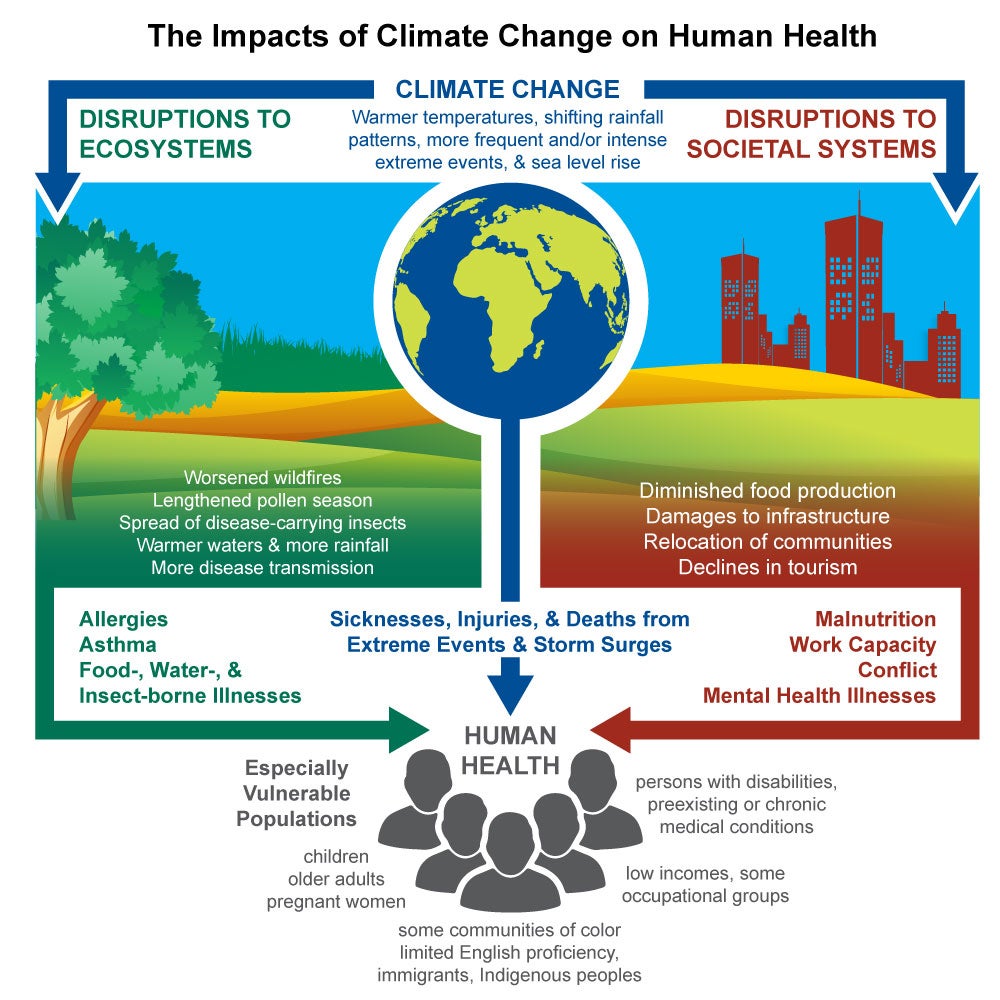
source: Flickr
This is a big week for those of us fighting to protect the Clean Power Plan in court.
The U.S. Court of Appeals for the D.C. Circuit is preparing to hear arguments on the merits of the historic measure to reduce climate pollution and protect public health. Opponents are challenging the Environmental Protection Agency’s (EPA) plan, and they won an emergency stay from the Supreme Court – but no court has yet heard the case on its merits. The merits are being briefed now before the D.C. Circuit Court, which will hold oral argument on June 2nd.
Supporters of the Clean Power Plan file briefs with the D.C. Circuit Court this week.
EPA filed its response to challengers today, writing:
The [Clean Power Plan] will secure critically important reductions in carbon dioxide (“CO2”) emissions from what are by far the largest emitters in the United States—fossil-fuel-fired power plants. CO2 and other heat-trapping greenhouse-gas emissions pose a monumental threat to Americans’ health and welfare by driving long-lasting changes in our climate, leading to an array of severe negative effects, which will worsen over time. These effects include rising sea levels that could flood coastal population centers; increasingly frequent and intense weather events such as storms, heat waves, and droughts; impaired air and water quality; shrinking water supplies; the spread of infectious disease; species extinction; and national security threats …
The Clean Air Act … provides the Environmental Protection Agency (“EPA”) well-established authority to abate threats to public health and welfare by limiting the amount of air pollution that power plants pump into the atmosphere. For decades, a host of CAA regulatory programs have limited various pollutants emitted by these plants …
This critically important Rule marks a significant step forward in addressing the Nation’s most urgent environmental threat. Fossil-fuel-fired power plants are, far and away, the largest stationary sources of CO2 pollution, and no meaningful effort to abate climate change can fail to address them. EPA’s authority and responsibility under Section 111(d) to control this pollution is well-established and was central to the Supreme Court’s holding in AEP that ‘the [CAA] and the EPA actions it authorizes displace any federal common-law right to seek abatement of [CO2] emissions from fossil-fuel fired power plants.’ 564 U.S. at 424. EPA has properly performed its Congressionally assigned task to limit this pollution …
The [Clean Power Plan] reflects the eminently reasonable exercise of EPA’s recognized statutory authority. It will achieve cost-effective CO2 reductions from an industry that has already demonstrated its ability to comply with robust pollution-control standards through the same measures and flexible approaches. The Rule fulfills both the letter and spirit of Congress’s direction in the Act, and the petitions should be denied. (Pages 1, 3 and 25; Read the full brief here)
Environmental Defense Fund is a party to the case and will file a brief in support of the Clean Power Plan tomorrow, along with a broad and diverse coalition that includes numerous states, cities, power companies, clean energy companies, public health and medical associations, and environmental organizations.
A wide range of supporters will file amicus, or “friend of the court,” briefs on Friday, April 1st.
The Clean Power Plan
The U.S. Environmental Protection Agency (EPA) effort is the single biggest step America has ever taken to address the threat of climate change. It established the first-ever national limits on carbon pollution from fossil-fuel fired power plants.
Fossil fuel-fired power plants are the largest source of greenhouse gas emissions in the United States, accounting for almost 40 percent of the country’s carbon pollution. There is enormous potential for the power sector to reduce pollution by shifting to clean sources of energy – with immense attendant benefits for the health of our families and communities, for creating jobs and strengthening the American economy, and for safeguarding our planet for our children.
EPA estimates that by 2030, the Clean Power Plan will:
- Reduce carbon pollution from existing power plants 32 percent below 2005 levels
- Save 3,600 lives annually
- Prevent 90,000 childhood asthma attacks annually
- Save American families almost $85 on their annual energy bill
The standards not only have huge benefits, they are eminently achievable. On a national basis, the power sector has already reduced carbon pollution emissions by 15 percent since 2005, a faster rate of reduction than the Clean Power Plan requires.
The Clean Power Plan gives states extensive flexibility to forge pollution-reduction strategies tailored to their individual needs and economic opportunities. In fact, many states around the country – including some that are suing to stop it — are already well on their way towards meeting the emission limits set forth in the Clean Power Plan.
History of the Case
Opponents of the Clean Power Plan, including major emitters of harmful carbon pollution, started suing to stop it before EPA even finished writing it. (Various courts threw out those lawsuits).
Opponents unsuccessfully petitioned the D.C. Circuit Court for an emergency stay. After two months of briefing and weeks of careful review, a unanimous panel of the D.C. Circuit Court denied motions to stay the Clean Power Plan on January 21st of this year. The court also set an expedited schedule to hear lawsuits on its merits.
In a highly unusual decision, the Supreme Court then overruled the unanimous D.C. Circuit Court panel by a 5-to-4 vote, and granted an emergency stay of the Clean Power Plan. However, the Supreme Court’s order was not a decision on the merits of the case. It put the Clean Power Plan on pause, but it did not rule against it.
Leading legal experts have explained that the stay does not require EPA to stop all work related to the Clean Power Plan, nor does it require postponement of compliance deadlines – see this well-reasoned piece by New York University Law School dean emeritus Richard Revesz.
The Clean Power Plan Rests on a Solid Legal and Technical Foundation
EPA’s authority – and responsibility – to regulate carbon pollution from the power sector under the Clean Air Act is well-established.
The Supreme Court has affirmed EPA’s authority to regulate greenhouse gases under the Clean Air Act three times since 2007. In American Electric Power v. Connecticut (2011), the Supreme Court specifically held that section 111(d) of the Clean Air Act – the provision that underlies the Clean Power Plan – “speaks directly” to the regulation of carbon pollution from existing power plants.
This conclusion was, in fact, stated before the Supreme Court by attorneys for some of the nation’s largest power companies – who declared unequivocally at oral argument that EPA has authority to regulate carbon pollution from the power sector under section 111(d):
We believe that the EPA can consider, as it’s undertaking to do, regulating existing nonmodified sources under section 111 of the Clean Air Act, and that’s the process that’s engaged in now… Obviously, at the close of that process there could be APA challenges on a variety of grounds, but we do believe that they have the authority to consider standards under section 111. – (Counsel for petitioners in AEP v. Connecticut)
As required by the Clean Air Act, EPA also exhaustively analyzed the Clean Power Plan to ensure that it is based on the best available technical information and will not compromise the affordable, reliable supply of electricity. EPA’s review of the millions of comments it received on every aspect of the proposed version of the Clean Power Plan has only strengthened the technical foundations of the final rule.
The Clean Power Plan Has Extraordinarily Broad Support
A broad and diverse group of entities has been standing up for the Clean Power Plan in court, and are expected to be among an even larger group filing this week. Some of these groups, including EDF, are parties to the case. Others will be filing as friends of the court.
The list of supporters includes:
- The National League of Cities, the U.S. Conference of Mayors, and the cities of Baltimore (MD), Coral Gables (FL), Grand Rapids (MI), Houston (TX), Jersey City (NJ), Los Angeles (CA), Minneapolis (MN), Portland (OR), Pinecrest (FL), Providence (RI), Salt Lake City (UT), San Francisco (CA), West Palm Beach (FL) and Boulder County (CO).
- 18 states and seven other cities – including New York, Chicago, and Philadelphia.
- Power Companies – including Calpine, National Grid Generation, Southern California Edison and the cities of Austin (TX) and Seattle (WA) which are engaging through their municipal power departments.
- Leading medical and public health associations like the American Lung Association, the American Thoracic Society, and the American Medical Association.
- The Institute for Policy Integrity at New York University Law School.
- Two former EPA Administrators who served under Republican Presidents Nixon, Reagan and George H.W. Bush.
- A number of former state energy and environmental regulators, including a former Chairman of the Federal Energy Regulatory Commission and former officials from several of the states whose attorney generals are challenging the rule.
- A host of clean energy companies represented by Advanced Energy Economy and the national wind and solar associations, on behalf of America’s $200 billion clean energy industry.
States and Power Companies are Moving Ahead to Cut Dangerous Carbon Pollution
After the Supreme Court’s unprecedented decision to stay the Clean Power Plan, many states and power companies are continuing to expeditiously move forward with compliance planning and stakeholder engagement.
More than twenty states across the country – both states that oppose the Clean Power Plan and states that are strongly supportive — have indicated they are going to continue forward with the specifics of compliance planning, or have indicated they will stay on course to meet emissions reductions obligations. For example:
Colorado’s Department of Public Health and Environment said:
[I]it is prudent… to move forward during the litigation to ensure that the state is not left at a disadvantage… because the Supreme Court did not say whether the stay would change the rule’s compliance deadlines, Colorado could lose valuable time if it delays its work on the state plan and the rule is ultimately upheld.
New Mexico’s Environment Secretary Ryan Flynn said in a statement:
[D]espite capricious political winds, the New Mexico Environment Department remains committed to taking meaningful action to reduce greenhouse gases by a projected 5.7 million tons by the end of 2017.
South Carolina has also indicated it expects to continue work to decarbonize the state’s power industry, an effort which began two years ago.
Power companies across the country echo these sentiments, with many clearly recognizing that it is high-risk strategy for states to put down their pencils. In addition to creating unnecessary regulatory risk for companies making investment decisions, many companies are committed to moving forward with emissions reduction strategies.
American Electric Power, an electricity provider and one of the country’s top coal users, says the court case:
[D]oesn’t change our focus on the diversification of our generation fleet, [and] those diversification plans include more natural gas and renewables.
The many and diverse supporters of the Clean Power Plan recognize that climate change is a threat to all of us, and that we must take action to address that threat. Allowing power plants to discharge unlimited amounts of carbon pollution into our air is a clear and present danger to public health, the environment and our economy, and we cannot allow it to continue. EDF is proud to be part of this vibrant group of supporters.











 This week a broad coalition of public health and environmental organizations, including EDF, submitted a
This week a broad coalition of public health and environmental organizations, including EDF, submitted a 
